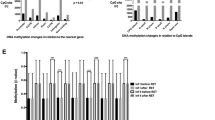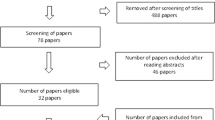Abstract
Various types of exercise alter the population of circulating peripheral blood mononuclear cells (PBMCs) and change their transcriptional output. This work examines changes in PBMC populations and transcription in response to resistance exercise training (RET), and identify key transcriptional changes in PBMCs that may play a role in altering peripheral tissues in response to RET. Ten resistance-trained men (20–24 years), performed an acute bout of RET for ~30 min following a 12 h fast. Venous blood was sampled at rest, immediately following exercise, and at 2 h post-exercise and analyzed for total and differential leukocytes and global gene expression using Affymetrix Genechips. Results showed elevated leukocytes, monocytes, lymphocytes, and lactate values immediately post-exercise (P < 0.05) over baseline. At 2 h post-exercise, leukocytes, and granulocytes remained elevated (P < 0.05), whereas lymphocytes were lower than (P < 0.05) baseline values. Initial microarray results showed the greatest transcriptional changes in pathways related to immune response, inflammation, and cellular communication. The change in PBMC population (2 h time point) correlated with a dramatic decrease in the expression of CD160, and XCL1, markers of lymphocyte populations. At the 2 h recovery time point upregulation of matrix metalloproteinase 9, orosomucoid 1, dishevelled-associated activator of morphogenesis 2, and arginase 1 suggest an induction in muscle damage and repair during this time frame. These results demonstrate that an acute bout of RET disrupts cellular homeostasis, induces a transient redistribution of certain leukocytes, and results in transcriptional changes in PBMCs translating into systemic changes in response to RET.




Similar content being viewed by others
References
Affymetrix (2003) Genechip Expression Analysis Technical Manual. Affymetrix, Santa Clara
Bachle LA, Smith DD, Petzel D (2000) Isolation and characterization of insulin from the Brockmann body of Dissostichus mawsoni, an Antarctic teleost fish. J Pept Res 56:47–54
Bansal V, Ochoa JB (2003) Arginine availability, arginase, and the immune response. Curr Opin Clin Nutr Metab Care 6:223–228
Bolstad BM, Irizarry RA, Astrand M, Speed TP (2003) A comparison of normalization methods for high density oligonucleotide array data based on variance and bias. Bioinformatics 19:185–193
Carlson LA, Headley S, DeBruin J, Tuckow AT, Koch AJ, Kenefick RW (2008) Carbohydrate supplementation and immune responses after acute exhaustive resistance exercise. Int J Sport Nutr Exerc Metab 18:247–259
Cirone P, Lin S, Griesbach HL, Zhang Y, Slusarski DC, Crews CM (2008) A role for planar cell polarity signaling in angiogenesis. Angiogenesis 11:347–360
Clarkson PM, Dedrick ME (1988) Exercise-induced muscle damage, repair, and adaptation in old and young subjects. J Gerontol 43:91–96
Clarkson PM, Tremblay I (1988) Exercise-induced muscle damage, repair, and adaptation in humans. J Appl Physiol 65:1–6
Connolly PH, Caiozzo VJ, Zaldivar F, Nemet D, Larson J, Hung SP, Heck JD, Hatfield GW, Cooper DM (2004) Effects of exercise on gene expression in human peripheral blood mononuclear cells. J Appl Physiol 97:1461–1469
Dubois B, Opdenakker G, Carton H (1999) Gelatinase B in multiple sclerosis and experimental autoimmune encephalomyelitis. Acta Neurol Belg 99:53–56
Fischer K, Hoffmann P, Voelkl S, Meidenbauer N, Ammer J, Edinger M, Gottfried E, Schwarz S, Rothe G, Hoves S, Renner K, Timischl B, Mackensen A, Kunz-Schughart L, Andreesen R, Krause SW, Kreutz M (2007) Inhibitory effect of tumor cell-derived lactic acid on human T cells. Blood 109:3812–3819
Henson DA, Nieman DC, Blodgett AD, Butterworth DE, Utter A, Davis JM, Sonnenfeld G, Morton DS, Fagoaga OR, Nehlsen-Cannarella SL (1999) Influence of exercise mode and carbohydrate on the immune response to prolonged exercise. Int J Sport Nutr 9:213–228
Irizarry RA, Bolstad BM, Collin F, Cope LM, Hobbs B, Speed TP (2003) Summaries of Affymetrix GeneChip probe level data. Nucleic Acids Res 31:e15
Kanbe N, Tanaka A, Kanbe M, Itakura A, Kurosawa M, Matsuda H (1999) Human mast cells produce matrix metalloproteinase 9. Eur J Immunol 29:2645–2649
Klipper-Aurbach Y, Wasserman M, Braunspiegel-Weintrob N, Borstein D, Peleg S, Assa S, Karp M, Benjamini Y, Hochberg Y, Laron Z (1995) Mathematical formulae for the prediction of the residual beta cell function during the first two years of disease in children and adolescents with insulin-dependent diabetes mellitus. Med Hypotheses 45:486–490
Koch AJ, Potteiger JA, Chan MA, Benedict SH, Frey BB (2001) Minimal influence of carbohydrate ingestion on the immune response following acute resistance exercise. Int J Sport Nutr Exerc Metab 11:149–161
Kraemer WJ, Clemson A, Triplett NT, Bush JA, Newton RU, Lynch JM (1996) The effects of plasma cortisol elevation on total and differential leukocyte counts in response to heavy-resistance exercise. Eur J Appl Physiol Occup Physiol 73:93–97
Lecchi C, Avallone G, Giurovich M, Roccabianca P, Ceciliani F (2009) Extra hepatic expression of the acute phase protein alpha 1-acid glycoprotein in normal bovine tissues. Vet J 180:256–258
Louis E, Raue U, Yang Y, Jemiolo B, Trappe S (2007) Time course of proteolytic, cytokine, and myostatin gene expression after acute exercise in human skeletal muscle. J Appl Physiol 103:1744–1751
Malm C, Nyberg P, Engstrom M, Sjodin B, Lenkei R, Ekblom B, Lundberg I (2000) Immunological changes in human skeletal muscle and blood after eccentric exercise and multiple biopsies. J Physiol 529(1):243–262
Mihm S, Droge W (1985) Regulation of cytotoxic T-lymphocyte activation by l-lactate and pyruvate. Cell Immunol 96:235–240
Nehlsen-Cannarella SL, Fagoaga OR, Nieman DC, Henson DA, Butterworth DE, Schmitt RL, Bailey EM, Warren BJ, Utter A, Davis JM (1997) Carbohydrate and the cytokine response to 2.5 h of running. J Appl Physiol 82:1662–1667
Nieman DC (1995) Upper respiratory tract infections and exercise. Thorax 50:1229–1231
Nieman DC (1997) Immune response to heavy exertion. J Appl Physiol 82:1385–1394
Nieman DC, Cook VD, Henson DA, Suttles J, Rejeski WJ, Ribisl PM, Fagoaga OR, Nehlsen-Cannarella SL (1995a) Moderate exercise training and natural killer cell cytotoxic activity in breast cancer patients. Int J Sports Med 16:334–337
Nieman DC, Henson DA, Sampson CS, Herring JL, Suttles J, Conley M, Stone MH, Butterworth DE, Davis JM (1995b) The acute immune response to exhaustive resistance exercise. Int J Sports Med 16:322–328
Nieman DC, Simandle S, Henson DA, Warren BJ, Suttles J, Davis JM, Buckley KS, Ahle JC, Butterworth DE, Fagoaga OR et al (1995c) Lymphocyte proliferative response to 2.5 hours of running. Int J Sports Med 16:404–409
Nikolova M, Marie-Cardine A, Boumsell L, Bensussan A (2002) BY55/CD160 acts as a co-receptor in TCR signal transduction of a human circulating cytotoxic effector T lymphocyte subset lacking CD28 expression. Int Immunol 14:445–451
Pizza FX, Baylies H, Mitchell JB (2001) Adaptation to eccentric exercise: neutrophils and E-selectin during early recovery. Can J Appl Physiol 26:245–253
Radom-Aizik S, Kaminski N, Hayek S, Halkin H, Cooper DM, Ben-Dov I (2007a) Effects of exercise training on quadriceps muscle gene expression in chronic obstructive pulmonary disease. J Appl Physiol 102:1976–1984
Radom-Aizik S, Leu SY, Cooper DM, Zaldivar F Jr (2007b) Serum from exercising humans suppresses t-cell cytokine production. Cytokine 40:75–81
Ringner M (2008) What is principal component analysis? Nat Biotechnol 26:303–304
Shephard RJ, Rhind S, Shek PN (1994) Exercise and training: influences on cytotoxicity, interleukin-1, interleukin-2 and receptor structures. Int J Sports Med 15(Suppl 3): S154–S166
Shinkai S, Shore S, Shek PN, Shephard RJ (1992) Acute exercise and immune function. Relationship between lymphocyte activity and changes in subset counts. Int J Sports Med 13:452–461
Simonson SR, Jackson CG (2004) Leukocytosis occurs in response to resistance exercise in men. J Strength Cond Res 18:266–271
Stamenkovic I (2000) Matrix metalloproteinases in tumor invasion and metastasis. Semin Cancer Biol 10:415–433
Sundstrom J, Evans JC, Benjamin EJ, Levy D, Larson MG, Sawyer DB, Siwik DA, Colucci WS, Sutherland P, Wilson PW, Vasan RS (2004) Relations of plasma matrix metalloproteinase-9 to clinical cardiovascular risk factors and echocardiographic left ventricular measures: the Framingham Heart Study. Circulation 109:2850–2856
Tran A, Yang G, Doglio A, Ticchioni M, Laffont C, Durant J, Bernard JL, Gugenheim J, Saint-Paul MC, Bernard A, Rampal P, Benzaken S (1997) Phenotyping of intrahepatic and peripheral blood lymphocytes in patients with chronic hepatitis C. Dig Dis Sci 42:2495–2500
Tu L, Murphy PG, Li X, Tedder TF (1999) L-selectin ligands expressed by human leukocytes are HECA-452 antibody-defined carbohydrate epitopes preferentially displayed by P-selectin glycoprotein ligand-1. J Immunol 163:5070–5078
Westmuckett AD, Moore KL (2009) Lack of tyrosylprotein sulfotransferase activity in hematopoietic cells drastically attenuates atherosclerosis in Ldlr−/− mice. Arterioscler Thromb Vasc Biol 29:1730–1736
Xu L, Hilliard B, Carmody RJ, Tsabary G, Shin H, Christianson DW, Chen YH (2003) Arginase and autoimmune inflammation in the central nervous system. Immunology 110:141–148
Acknowledgments
The views, opinions, and findings in this report are those of the authors and should not be construed as official Department of the Army position, policy, or decision unless so designated by other official designation. All experiments were carried out in accordance to state and federal guidelines. This publication was made possible by the Vermont Genetics Network through Grant Number P20 RR16462 from the INBRE Program of the National Center for Research Resources (NCRR), a component of the National Institutes of Health (NIH). Its contents are solely the responsibility of the authors and do not necessarily represent the official views of NCRR or NIH. The authors would like to thank all the men who participated in this exercise study, Dr. Jeff Bond for bioinformatics support at the University of Vermont (UVM), and Tim Hunter in the VGN microarray core lab (UVM) for assistance in the experimental design.
Conflict of interest
None.
Author information
Authors and Affiliations
Corresponding author
Additional information
Communicated by Martin Flueck.
Rights and permissions
About this article
Cite this article
Carlson, L.A., Tighe, S.W., Kenefick, R.W. et al. Changes in transcriptional output of human peripheral blood mononuclear cells following resistance exercise. Eur J Appl Physiol 111, 2919–2929 (2011). https://doi.org/10.1007/s00421-011-1923-2
Received:
Accepted:
Published:
Issue Date:
DOI: https://doi.org/10.1007/s00421-011-1923-2




